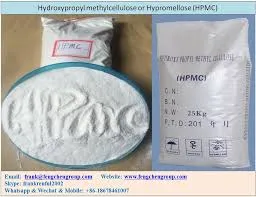
ડીસેમ્બર . 31, 2024 04:46 Back to list
Understanding Redispersible Polymer Powder and Its Applications in Construction and Adhesives
Redispersible Polymer Powder (RDP) An Essential Component in Modern Construction Materials
In the ever-evolving landscape of construction chemicals, Redispersible Polymer Powder (RDP) has emerged as a crucial additive that significantly enhances the performance and versatility of various building materials. RDP, a fine white powder, is produced through the spray-drying of polymer dispersions and is widely used in cementitious systems, such as tile adhesives, patching compounds, and external insulation and finishing systems (EIFS). Its incorporation in these mixtures imparts a range of desirable properties, making it an indispensable component in modern construction applications.
One of the primary advantages of RDP is its ability to improve the adhesion of the final product to various substrates. When mixed with cement-based formulations, RDP provides a strong bond between the mortar and the surfaces it adheres to, whether they are ceramic tiles, concrete, or brick. This adhesion enhancement is particularly critical in tile adhesives, where a secure bond is essential to prevent tiles from cracking or becoming dislodged. The use of RDP thus not only improves the structural integrity of the installation but also prolongs the lifespan of the finished work.
In addition to enhancing adhesion, RDP significantly improves the flexibility and elasticity of cementitious materials. This is particularly valuable in construction projects that undergo thermal expansion and contraction or where movement is expected due to environmental factors. By adding RDP, manufacturers can create flexible and resilient materials, reducing the likelihood of cracking and other forms of damage. This property is especially important in applications such as facade coatings and flooring, where the materials must accommodate movement without sacrificing performance.
redispersible polymer powder rdp

Another remarkable benefit of RDP is its water retention capabilities. When incorporated into a dry mix, RDP helps retain moisture during the curing process, ensuring that the chemical reactions necessary for the development of strength are facilitated. This enhanced water retention can lead to improved workability, allowing for easier application of the material. It also minimizes the risk of shrinkage cracks, which can occur when surfaces dry too quickly. As a result, construction projects that utilize RDP can achieve better aesthetics and structural soundness.
Moreover, RDP can enhance the resistance of construction materials to weathering and environmental degradation. Products containing RDP demonstrate exceptional durability in outdoor applications, resisting effects from UV light, moisture, and temperature fluctuations. This durability not only translates to longer-lasting installations but also reduces maintenance costs over time. For designers and engineers, incorporating RDP into their formulations can lead to more sustainable practices, as materials can withstand harsher conditions and require fewer repairs or replacements.
As the construction industry increasingly shifts toward eco-friendliness and sustainability, RDP aligns well with these trends. Many RDP products are produced from renewable resources, offering a greener alternative to traditional materials. Additionally, the improved performance of RDP-enhanced products can lead to lower material consumption and waste in construction processes, further contributing to sustainable building practices.
In conclusion, Redispersible Polymer Powder is a vital additive that elevates the performance of construction materials. Its ability to enhance adhesion, flexibility, water retention, and resistance to environmental factors makes it an essential component in numerous applications, from tile adhesives to exterior coatings. As the demand for high-performance, durable, and sustainable building materials continues to grow, RDP will undoubtedly play a key role in shaping the future of the construction industry. In adopting innovative materials like RDP, construction professionals can ensure that they meet the evolving needs of modern architecture while upholding standards of quality and sustainability.
-
Versatile Hpmc Uses in Different Industries
NewsJun.19,2025
-
Redispersible Powder's Role in Enhancing Durability of Construction Products
NewsJun.19,2025
-
Hydroxyethyl Cellulose Applications Driving Green Industrial Processes
NewsJun.19,2025
-
Exploring Different Redispersible Polymer Powder
NewsJun.19,2025
-
Choosing the Right Mortar Bonding Agent
NewsJun.19,2025
-
Applications and Significance of China Hpmc in Modern Industries
NewsJun.19,2025







